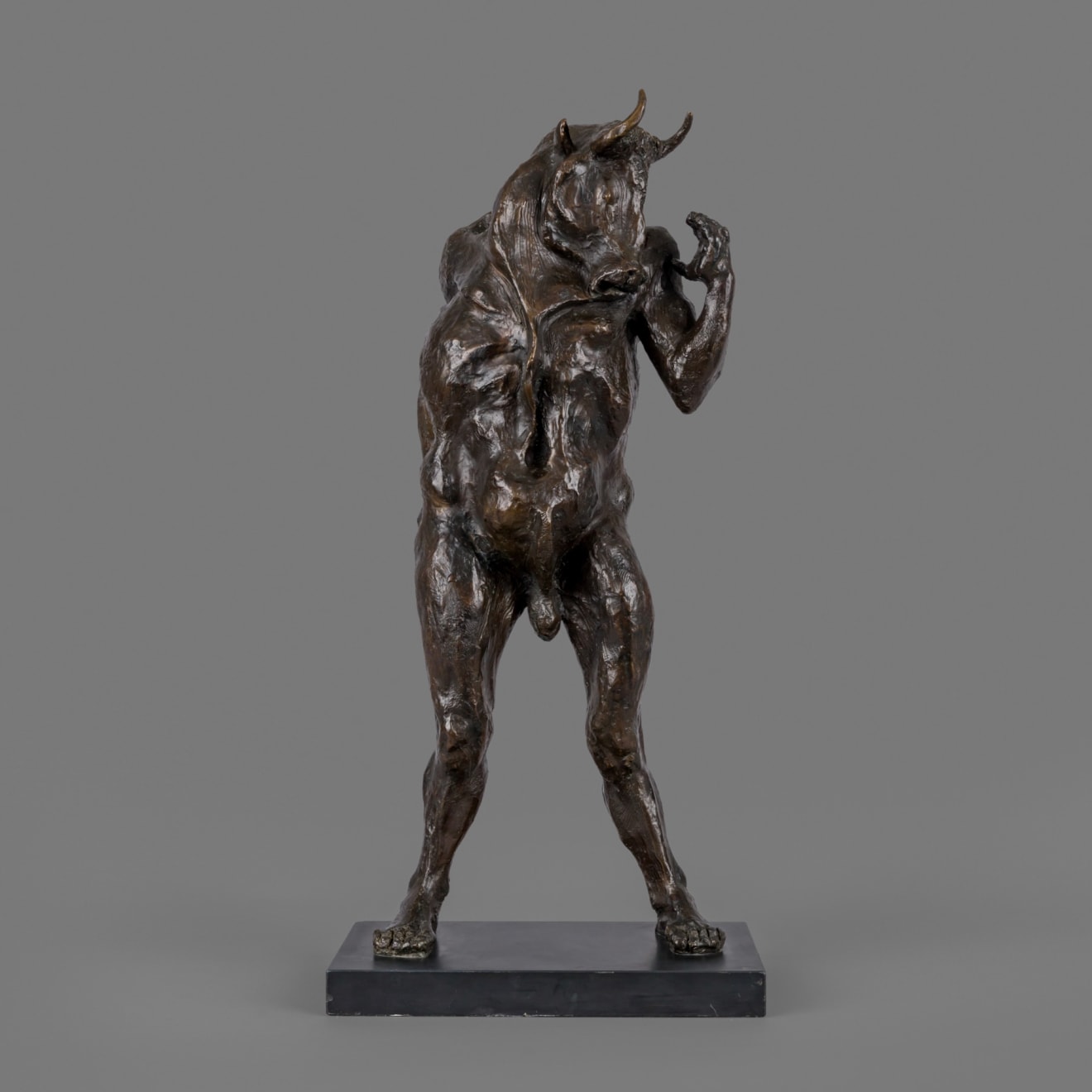Michael Ayrton 1921-1975
61.6 x 26 x 17.2 cm
The Greek myth of the Minotaur and Daedalus’s accompanying labyrinth were a source of great inspiration for Ayrton, whose preoccupation with the surrounding symbolism drove his work forward from 1964 onwards. These motifs enabled Ayrton to investigate ideas around subjective experience, through which he explored his musings on the hopes and fears, journeys, sanctuaries and prisons formed within the subconscious mind. In the Daedalus story of classical Greek mythology, for example, King Minos employed Daedalus to build a labyrinth to imprison his Minotaur son. Having constructed the maze, the King realised that Daedalus was the only one who knew its secrets and so imprisoned him and his son Icarus in a tower. To escape, Daedalus created a pair of wings from wax and feathers for himself and his son. Icarus leapt from the tower but failed to heed his father’s warnings, and upon flying too close to the sun the wax in his wings melted sending him to his death. Various forms of the Minotaur, the maze, Daedalus and Icarus feature in Ayrton’s sculpture, as he sought to reinterpret mythological narratives and communicate layers of meaning in figurative form.




